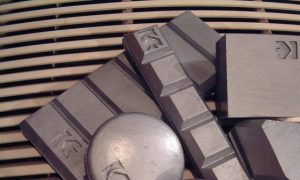(ThyBlackMan.com) Machines are human inventions that make manual labor easier and more cost-efficient. This is especially true on construction and agriculture, where manual labor is operational for the whole operation to work out. In order to reduce manual labor and the cost, companies decided to use large machinery which only needs maintenance and occasional part replacement.
When using machines, especially on construction and agriculture, the longevity of a unit depends on the wear and tear received. When a part broke down, it would need to be replaced as soon as possible in order to avoid production or construction delay. Instruments that provide accurate measurements are sometimes also subjected to harsh conditions that cause wear and tear to the measuring equipment. An accurate measurement is important, especially in construction.
Wear and tear, impact, corrosion, and abrasion damages are things that are needed to be dealt with as these are part of the usage of the tool or a machine. However, it doesn’t mean that its impact cannot be lessened. Options such as a Chromium Carbide plate and gauge blocks are getting more and more popular these days.
What Is A Gauge Block?
A gauge block, also known as the Jo blocks, Johansson gauges, and slip gauges, is a set of individual blocks that can be “wrung” together in order to make a precision instrument. These blocks are manufactured by definite sizes and are made of either ceramic block or a metal alloy block. Although this technology is relatively old (invented by Carl Edvard Johansson in 1896), these blocks are still used in construction because of its uses. By “wringing” blocks, or sliding two blocks together, the ultra flat surface will make these blocks attached. This bond, which doesn’t use any adhesive at all, can withstand a pull of 75 lb.
Although gauge blocks are basically just ceramic or metal alloy blocks that stick together when wrung, their importance lies on its precision and the ability to customize a measuring instrument. Each block are made precise measurements, and because connecting the blocks doesn’t require adhesive, these are more precise than other measuring methods.
The Importance Of “Wear Blocks”
Gauge Blocks are still used in construction these days because of its very precise measurement. However, there’s a problem when it comes to using these blocks: they are prone to wear and tear, impact, abrasion, and corrosion just like any other instruments and machines. One set of these blocks can cause at least $2,000, so it is not something a business owner would want to replace very often. Fortunately, there is a cheaper solution to make sure that these gauge blocks will have a longer life span. This solution comes with a throw away block known as the Wear Gauge Blocks or Wear Blocks.
The function of the wear blocks is to prevent any wear and tear damage to the initial gauge block, which, in turn, make its useful life longer. Wear blocks are attached on the “wear sides” outside the gauge block. Materials used for wear blocks made from chrome carbide plates, durable enough to withstand the everyday impact of wear and tear and other harsh factors. In addition, wear blocks costs only a fraction of gauge blocks, which makes it suitable as a throwaway material. A gauge block an a wear block looks relatively similar, but the word “wear” is etched in the block. When it comes to using wear gage blocks, the length must be included along with the gauge block. It is also recommended to check the wear block before usage in order to prevent damage.
What Makes A Good Wear Block?
A good wear block is important in order to ensure that gauge blocks, or other sets of blocks used, are safe and not damaged from their daily usage. What makes a good wear block is its material. Since these blocks are made of chrome carbide, the best grade for these are the ultra-hard grade which is combined with nickel alloy and is heat treated for fine microstructure. The material is also needed to be bonded metallurgically to a mild steel backing plate. This plate absorbs the impact and the vibration energy and is subject to zero wear from the abrasive flow. It is also a good addition for the wear blocks to come with a lot of sizes for different uses.
Staff Writer; Carl Shaw

















Leave a Reply